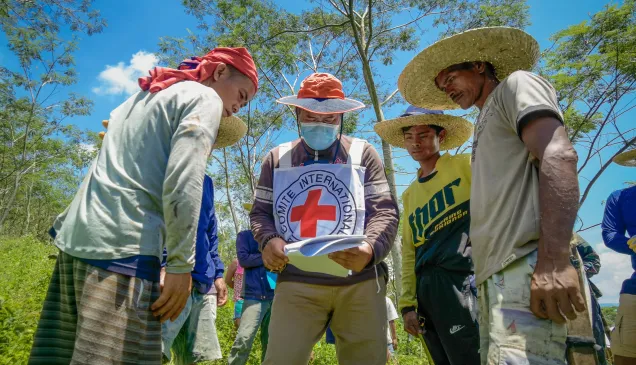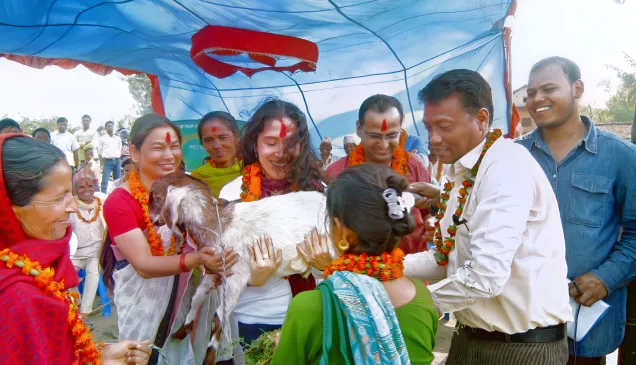Nepal earthquake: Operational update - June 2015

An earthquake of 7.8 magnitude hit Nepal on 25 April followed by the second earthquake of 7.3 magnitude on 12 May. Over 8,700 people were killed, 22,000 people were injured and more than 50 districts were affected.
Restoring family links
The ICRC launched its family links website on 25 April. The platform allowed anyone to register names of people with whom they have lost contact, names of those who wish to inform others that they are alive, and to search through the list of missing or of those who have responded that they are safe.
Together with Nepal Red Cross Society (NRCS) volunteers, we visited hospitals, children homes and camps for displaced people, in order to identify people who needed to communicate with their relatives. For them, being able to send the message "I am alive" made a huge difference.
Physical rehabilitation
Many patients have received financial assistance to travel back home after being discharged from receiving medical treatment. However, some earthquake survivors have sustained injuries that may require long-term physical rehabilitation. These include spinal cord injuries, amputations and certain cases of complicated fractures. An ICRC team has toured various hospitals to assess current and future needs, and the first patients have already been moved from emergency care to physical rehabilitation.
Dignified management of the dead
The ICRC is providing technical and material support to the Department of Forensic Medicine in Kathmandu, with whom it has a long-term relationship. We are coordinating the implementation of an additional storage space (refrigeration unit and cold room at the mortuary) at the mortuary. In addition, the ICRC continued its contacts with the security forces, aiming to ensure the proper management of human remains, with dignity and in full respect of cultural practices.
Psycho-social support
The ICRC supported the NRCS to implement its basic psycho-support programme in five districts across Nepal. The programme helps people in highly affected areas to express their fears, understand that their reaction is the normal answer to an abnormal event, and to prevent their initial trauma from becoming chronic.
Facts and figures
Between 25 April and 4 June 2015, in cooperation with the NRCS, the ICRC:
- enabled approximately 600 people to notify their families that they were alive through the family links website, and relatives and friends to register their missing loved ones (nearly 2,000 people)
- helped over 270 people to restore contact with their families through phone calls
- notified embassies of foreign detainees of their fate
- visited more than 20 hospitals, 11 camps for displaced people, two children homes as well as 10 jails to offer contact with the families, collect lists of missing persons and assist those who could not return home by themselves
- provided tarpaulins and hygiene kits to 13 jails
- supplied hospitals in the Kathmandu Valley and outlying districts with 11 sets of dressing modules, 11 sets of plaster castings, 2 sets of dressing burn, and tarpaulins
- provided support to NRCS for its first aid services; who in turn helped more than 6,100 earthquake victims
- developed a programme to provide long term physical rehabilitation services to earthquake survivors through its partners, Green Pastures Hospital, Pokhara, and Yerahity Rehabilitation Centre
- provided approximately 1,700 body bags for dignified management of the dead
- supported the Department of Forensic Medicine, providing light mortuary equipment, distributing four computers with ICRC AnteMortem/PostMortem Database and other related technical materials
- distributed two tents to police at KAT Mortuary, providing a sheltered area for families to view photos and personal effects, as part of the process to identify dead bodies
- provided basic psychological support to over 3,800 people in the five worst affected districts



